Staging Ovarian Cancer
To recommend the best ovarian cancer treatment plan, your doctor needs to know the grade of the tumor and the extent (stage) of ovarian cancer. The stage is based on whether the tumor has invaded nearby tissues, whether the cancer has spread, and if so, to what parts of the body.
Usually, surgery is needed before staging can be complete. The surgeon takes many samples of tissue from the pelvis and abdomen to look for cancer.
Your doctor may order one or more of the following tests to find out whether the cancer has spread:
- CT scan: Doctors often use CT scans to make pictures of organs and tissues in the pelvis or abdomen. An x-ray machine linked to a computer takes several pictures. You may receive contrast material by mouth and by injection into your arm or hand. The contrast material helps the organs or tissues show up more clearly. Abdominal fluid or a tumor may show up on the CT scan.
- Chest x-ray: X-rays of the chest can show tumors or fluid.
- Barium enema x-ray: Your doctor may order a series of x-rays of the lower intestine. You are given an enema with a barium solution. The barium outlines the intestine on the x-rays. Areas blocked by cancer may show up on the x-rays.
- Colonoscopy: Your doctor inserts a long, lighted tube into the rectum and colon. This exam can help tell if cancer has spread to the colon or rectum.
Stages of Ovarian Cancer
Stage I Ovarian Cancer
Cancer cells are found in one or both ovaries. Cancer cells may be found on the surface of the ovaries or in fluid collected from the abdomen. Stage I ovarian cancer is divided into stages IA, IB, and IC.
- Stage IA: Cancer is found inside a single ovary or fallopian tube
- Stage IB: Cancer is found inside both ovaries or fallopian tubes
- Stage IC: Cancer is found inside one or both ovaries or fallopian tubes and one of the following is true:
- cancer is also found on the outside surface of one or both ovaries or fallopian tubes; or
- the capsule (outer covering) of the ovary ruptured (broke open) before or during surgery; or
- cancer cells are found in the fluid of the peritoneal cavity (the body cavity that contains most of the organs in the abdomen) or in washings of the peritoneum (tissue lining the peritoneal cavity)
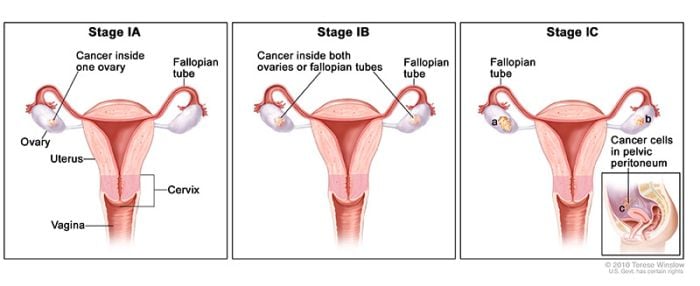
Stage II Ovarian Cancer
Cancer cells have spread from one or both ovaries to other tissues in the pelvis. Cancer cells are found on the fallopian tubes, the uterus, or other tissues in the pelvis. Cancer cells may be found in fluid collected from the abdomen.
- Stage IIA: Cancer has spread from where it originated to other areas such as the uterus, fallopian tubes, and/or ovaries.
- Stage IIB: Cancer cells have spread to organs in the peritoneal cavity (the space that contains the abdominal organs)
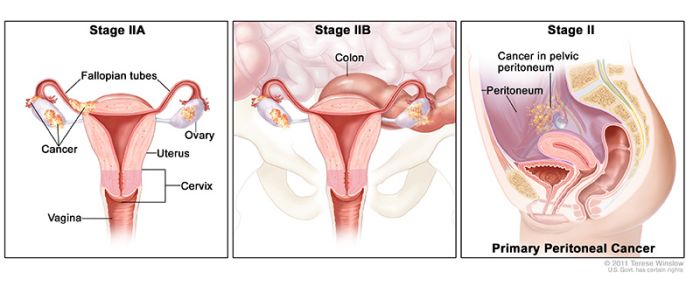
Stage III Ovarian Cancer
Cancer cells have spread to tissues outside the pelvis or to the regional lymph nodes. Cancer cells may be found on the outside of the liver. Stage II ovarian cancers are divided into stages IIA and IIB. Stage III is divided into stages IIIA, IIIB, and IIIC.
- For Stage IIIA, one of the following is true:
- cancer has spread to lymph nodes in the area outside or behind the peritoneum only; or
- cancer cells that can be seen only with a microscope have spread to the surface of the peritoneum outside the pelvis. Cancer may have spread to nearby lymph nodes.
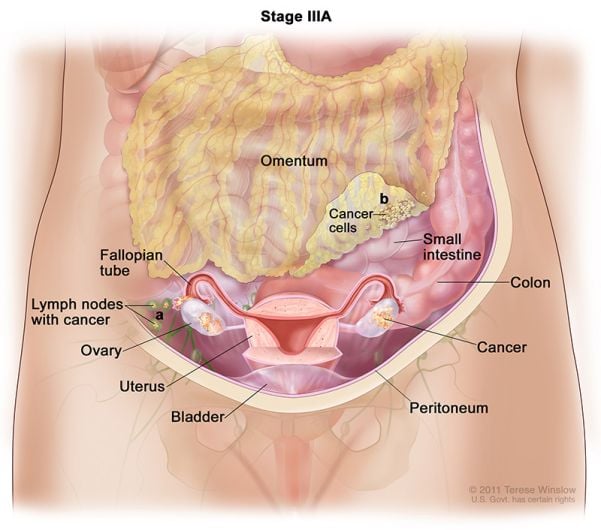
- Stage IIIB: Cancer has spread to the peritoneum outside the pelvis, and cancer in the peritoneum is no more than 2 centimeters. Cancer may have reached lymph nodes behind the peritoneum.
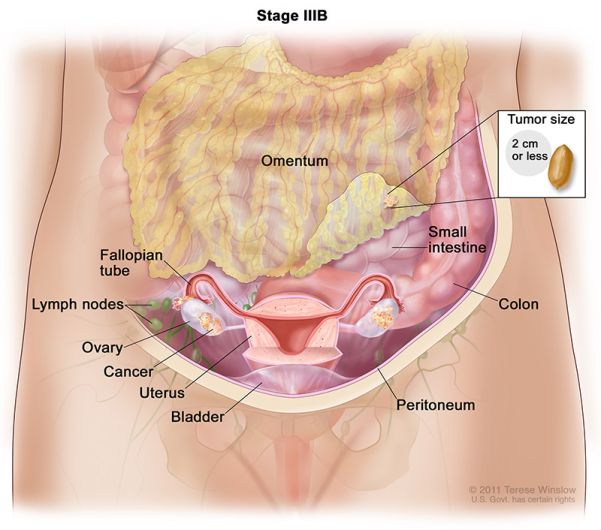
- Stage IIIC: Cancer has spread to the peritoneum outside the pelvis, and the cancer in the peritoneum is 2 centimeters or larger. Cancer may also have spread to regional lymph nodes, the liver, or the spleen.
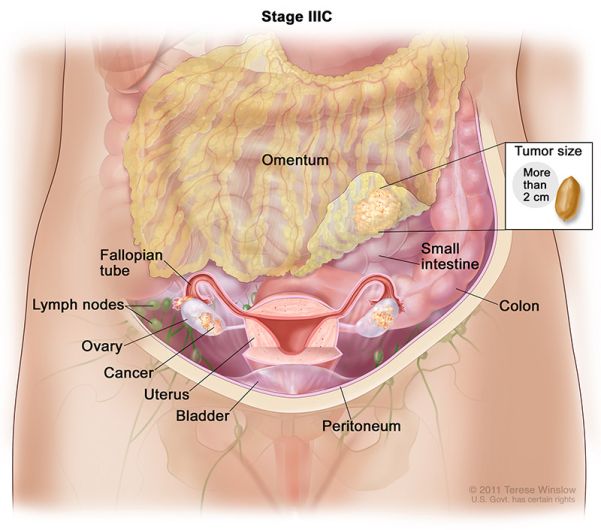
Stage IV Ovarian Cancer
Cancer cells have spread to tissues outside the abdomen and pelvis. Cancer cells may be found inside the liver, in the lungs, or in other organs. Stage IV is divided into stages IVA and IVB.
- Stage IVA: Cancer cells are found in extra fluid that builds up around the lungs.
- Stage IVB: Cancer has spread to organs and tissues outside the abdomen, including lymph nodes in the groin.
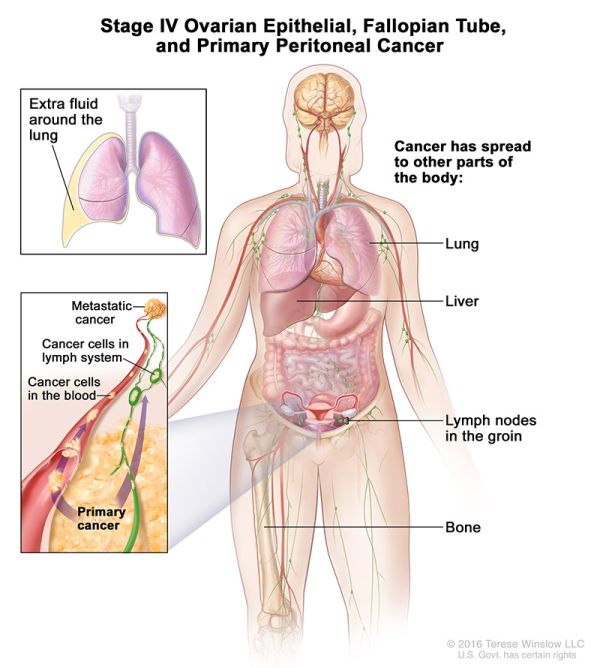
Ovarian Cancer Care at Virginia Oncology Associates
If you or a loved one has received an ovarian cancer diagnosis, our gynecologic oncologists are ready to help guide you through your journey. Our cancer specialists work with you to create a personalized treatment plan based on your specific diagnosis. Discover a comprehensive and compassionate approach to cancer care and advanced cancer treatment options offered by our team at Virginia Oncology Associates. Schedule an appointment with our gynecologic oncologist in Norfolk and Chesapeake, Virginia.


